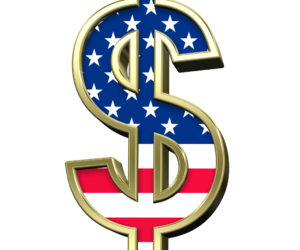In Merely Human? That’s So Yesterday, the NYTimes takes a feature look at the Singularity, “a time, possibly just a couple decades from now, when a superior intelligence will dominate and life will take on an altered form that we can’t predict or comprehend in our current, limited state.” An obvious focus of the piece is the Singularity’s primary proponent and advocate, futurist Ray Kurzweil.
Kurzweil is Chancellor and Trustee of Singularity University, sponsored by NASA, founded in 2009, and funded by a smattering of Silicon Valley luminaries including both Google founders. But it’s a couple new Kurzweil projects that will push the singularity concept into mainstream consciousness over the year ahead.
in 2009, and funded by a smattering of Silicon Valley luminaries including both Google founders. But it’s a couple new Kurzweil projects that will push the singularity concept into mainstream consciousness over the year ahead.
I’ve been an interested, if sometimes skeptical, follower of Kurzweil’s “movement” since his 1990 book, The Age of Intelligent Machines. My interest peaked with his 1999 follow-up, The Age of Spiritual Machines. He lost me in 2005’s The Singularity is Near: When Humans Transcend Biology.
That latter, unwieldy, tome (which I never finished) has made its way into two film projects. Transcendent Man [trailer] is a documentary about Kurzweil’s life and beliefs that has made the festival rounds and is apparently going into wider release in the fall. The Singularity is Near – The Movie, A True Story About the Future has just started to make its way around the film festival circuit. It’s “the tale of Ramona, a virtual being he builds that gradually becomes more human, battles hordes of microscopic robots and taps the lawyer Alan M. Dershowitz for legal advice and the motivational guru Tony Robbins for guidance on personal interactions.” Kurzweil is its producer and co-director.
The essence of Kurzweilian theory is that progress is exponential:
“With 30 linear steps, you get to 30,” he often says in speeches. “With 30 steps exponentially, you get to one billion. The price-performance of computers has improved one billion times since I was a student. In 25 years, a computer as powerful as today’s smartphones will be the size of a blood cell.”
That’s always made sense to me. So among those things I found most interesting in the NYTimes’ piece was the part about a Kurzweil foil, Jonathan Huebner:
A physicist who works at the Naval Air Warfare Center as a weapons designer, he, like Mr. Kurzweil, has compiled his own cathedral of graphs and lists of important inventions. He is unimpressed with the state of progress and, in 2005, published in a scientific journal a paper called “A Possible Declining Trend for Worldwide Innovation.”
Measuring the number of innovations divided by the size of the worldwide population, Dr. Huebner contends that the rate of innovation peaked in 1873. Or, based on the number of patents in the United States weighed against the population, he found a peak around 1916. (Both Dr. Huebner and Mr. Kurzweil are occasionally teased about their faith in graphs.)
“The amount of advance in this century will not compare well at all to the last century,” Dr. Huebner says, before criticizing tenets of the Singularity. “I don’t believe that something like artificial intelligence as they describe it will ever appear.”
Here’s the famous Kurzweil logarithmic graph of 15 lists of paradigm shifts for key historic events showing an exponential trend. The lists’ compilers include Carl Sagan, Paul D. Boyer, Encyclopædia Britannica, American Museum of Natural History, and University of Arizona. Click to enlarge:
Here Huebner’s “rate of innovation since the end of the Dark Ages. Points are an average over 10 years with the last point covering the period from 1990 to 1999. The smooth curve is a least squares fit of a modified Gaussian distribution to the data.”

You can find me @jwindish, at my Public Notebook, or email me at joe-AT-joewindish-DOT-com.

















